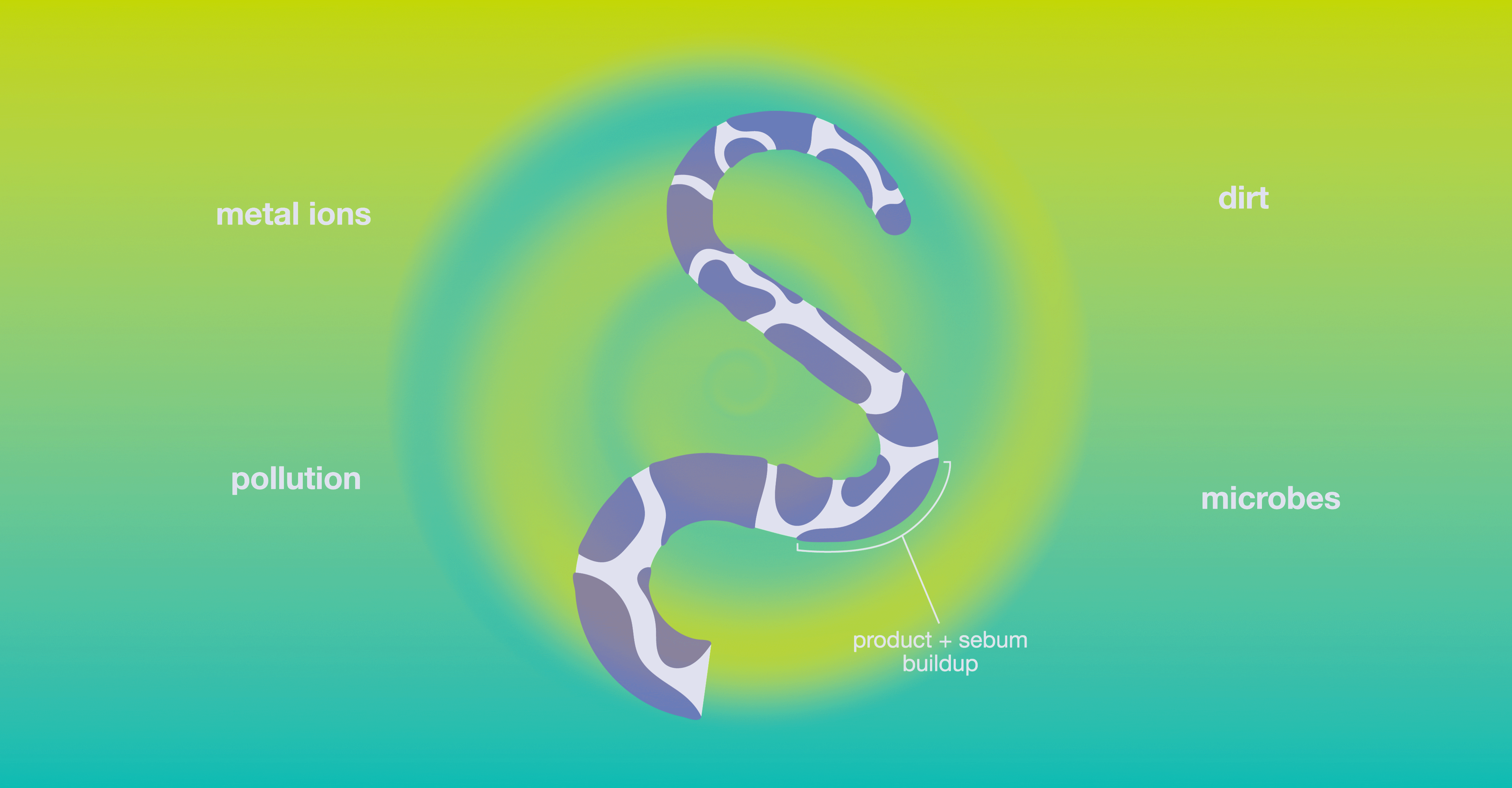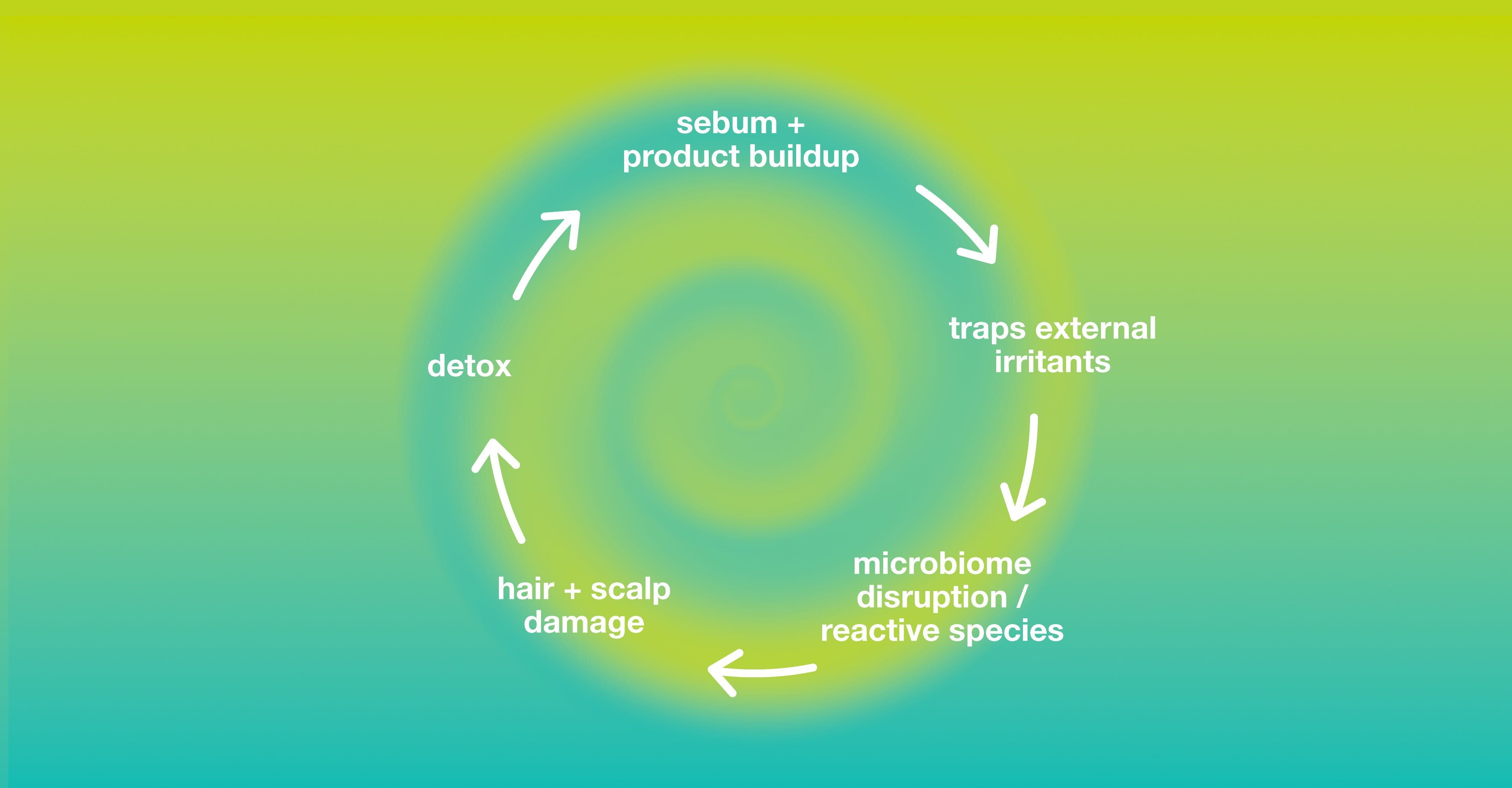Have you ever seen those long sticky strips used to trap bugs in the summer? This is kind of like that, but for hair.
Did you know that dirty hair, in its own way, becomes a sticky trap for unwanted hair pests?
setting the stage
Picture this—your hair and scalp are unique microenvironments where bacteria and fungi naturally live. The sebaceous glands on your scalp produce sebum, an oily, waxy substance that coats, moisturizes, and protects your skin and hair. When sebum production, hair growth, or hair + scalp microenvironments are in balance, your hair = healthy, shiny, bouncy, and strong. Nice.
But when your scalp + hair microenvironments are out of balance, the stuff accumulating on them gives microbes more to eat, meaning they thrive and grow in number. Overgrowth of certain species can result in a myriad of issues, from dandruff to inflammation, which amplifies the negative impact on your scalp and the skin your hair comes into contact with.
Studies have shown that people who are unable to wash their hair—including research teams in Antarctica and astronauts on the space station—had increased levels of the fungus Malassezia. This species is a normal member of the human microbiome, but when its growth is unchecked, it can contribute to scalp conditions like atopic dermatitis and folliculitis.
Folli-what? A fancy way of saying the infection of hair follicles, which not sure about you, but we'd like to avoid...
Another obvious result of microbes and their breakdown products: Your hair starts to smell. And over time, your hair looks dull because it's weighed down. Products don’t work as well, and you might be tempted to apply more to get the result you’re looking for.
So why does this happen?
dirty hair attracts…more dirt
Excessive sebum and accumulated products can throw off the natural, healthy pH of your scalp (about 5.5) and hair (4.5 to 5.5). As we know, an imbalance in scalp pH disrupts the skin barrier, weakening its defenses and making it more susceptible to external irritants and moisture loss.
But here’s the thing, it’s not just about the sebum that accumulates when you don’t wash your hair, it’s about what that sebum draws in. The lipids (i.e., oily stuff from sebum or haircare products) on your scalp and hair collect more dirt, debris, and environmental pollutants. They act like a sticky trap for things like pollen, particles from smoke, and heavy metals such as lead, mercury, cadmium, copper, iron, and even arsenic—all of which come along with their own set of problems. Even worse, they can be oxidized and transformed by UV from sunlight into reactive compounds that can be damaging to both skin and hair.

And because of this natural attraction, that means every time you step outside, your hair and scalp may collect things that get stuck and can eventually cause damage.

So, how do you stop this dirty hair cycle?
time for a reset
Dirty hair is no joke, but a detox treatment can be the key to bringing balance back to your scalp + hair. This can remove dirt, oil, and product buildup, leaving you refreshed and revived—or as the PROs call it, a clean canvas to work on.
But don't overdo it.
Think of a hair detox as a chemical peel for your skin. Too much of anything is not a good thing, so this intense treatment only needs to be done once or so a month.
Then you can kick back and enjoy that all-natural bounce, and strength—because clean hair really is healthy hair.

